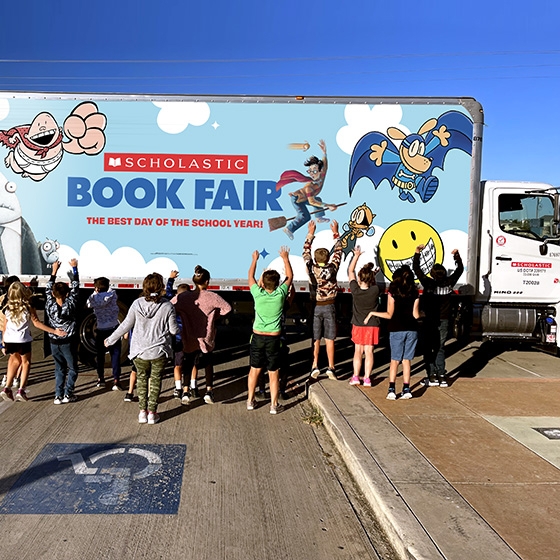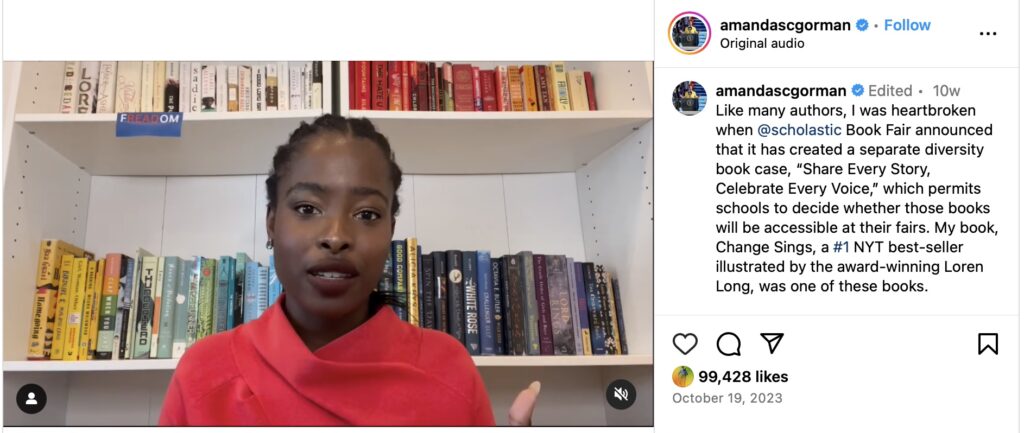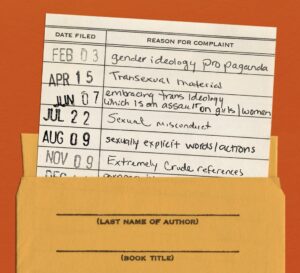 The Scholastic Book Fair is a long-running rite of passage for K-12 students in the United States when the educational publishing giant sets up big displays of books for sale at schools across the country. For your author, the Scholastic Book Club orders that came every month or two were high points of the the year, especially in grade school. (The book fairs didn’t start until 1981 when I was in college.) But in order for Scholastic to bring these thousands of books to students across the country, they have to stay in business.
The Scholastic Book Fair is a long-running rite of passage for K-12 students in the United States when the educational publishing giant sets up big displays of books for sale at schools across the country. For your author, the Scholastic Book Club orders that came every month or two were high points of the the year, especially in grade school. (The book fairs didn’t start until 1981 when I was in college.) But in order for Scholastic to bring these thousands of books to students across the country, they have to stay in business.
During 2023, Scholastic placed a large number of books into a group called, “Share Every Story, Celebrate Every Voice,” which sounds like a good thing when more than 30 states were facing efforts to keep books dealing with racial justice or sexuality out of schools. But Scholastic admitted that the collection existed so that states that “prohibit ‘certain kinds of books’ from schools” could keep these diverse books out of the sale. Scholastic initially defended having the separate collection, saying that the new laws in states banning such books from schools create “an almost impossible dilemma: back away from these titles or risk making teachers, librarians, and volunteers vulnerable to being fired, sued, or prosecuted…. We don’t pretend this solution is perfect – but the other option would be to not offer these books at all – which is not something we’d consider.”
Among the books in the collection were:
- The ABCs of Black History
- Biographies of Rep. John Lewis, Ruby Bridges, and Supreme Court Justice Ketanji Brown Jackson
- Change Sings, a picture book by poet Amanda Gorman with illustrations by Loren Long.
In a post on Instagram, Gorman reacted in sadness to the news that her book was on the segregated list:
“It took me a while to sit in what felt like a betrayal. As an elementary student, for weeks I’d save every single penny I had for the Scholastic Book Fair, because it felt like a free place that invited me to explore and choose for myself what books I wanted to read, what worlds I wanted to access, what stories I could finally find myself reflected within. It was one of the magical moments that made me want to write books for children in the first place.
“But the true depth of my disappointment came when I read about all the amazing, impactful books – predominantly by Black, brown, queer, and disabled authors – that won’t make it into the schools because there is now a clear pathway for prohibiting them from general access.”
But following extensive criticism from free speech and children’s groups, Scholastic decided to stop segregating the Share Every Story books into a separate collection that could easily be excluded. How will the company handle future complaints about books covering diversity and LGBTQ+ issues? That remains to be seen.
A similar controversy was sparked in North Carolina’s Charlotte-Mecklenburg school district when district officials told principals not to have their schools participate in events tied to the American Library Association’s annual Banned Book Week. The message to principals said, “It is not something we teach in our classrooms or as supplementary material for out of school learning.” The district was also concerned that discussion of banned books might violate a new state law that said parents had the right to control what their children learned in school. Edward Helmore, writing for the British newspaper The Guardian, said that this might be the first time that “efforts to draw attention to banned books has itself been banned.
Once the story about “banning Banned Book Week” started to spread through national media outlets, the narrative within the district started to change, saying the message to individual schools was “for building-level administrators to use, if needed.” The district went on to say that any Banned Book Week observation was not a violation of the Parents Bill of Rights.
The Washington Post, in 2023, took a deep dive into the issue of who was objecting to books and what kinds of books did these people dislike? Reporters looked at more than 1,000 challenges filed during the 2021-22 school year from 150 school districts nationwide.
Topics objected to included a biographical book on assassinated gay San Francisco politician Harvey Milk, a story about a boy who dresses as a mermaid, and a story about a Black child’s reaction to a killing of a girl by police in his hometown.
Carol Tilley, a faculty member at University of Illinois, compares the current culture of book banning to a case in Alabama in the 1950s where adults objected to The Rabbit’s Wedding about a black and a white rabbit getting married. “That didn’t play well in segregationist states at the time,” Tilley said. “I think that you see a long pattern: Concerns tend to mirror whatever the big social changes are at any particular time.”
While challenges targeting books with LGBTQ+ themes have been around since the early 2000s, the number of objections were spiking by 2018 when they accounted for 16 percent of all challenges. That grew to 20 percent in 2020 and up to 45.5 percent in 2022, according to the Washington Post.
At the core of many of these objections to books presenting LGBTQ+ stories is that these will normalize gay, trans, queer and non-binary narratives and make children feel that such feelings and behavior are acceptable. This is sometimes referred to as “grooming” or encouraging young people to consider different approaches to sexuality. (This would also fall under Secret Three: Everything from the margin moves to the center. Want to review all of the Seven Secrets? Here’s the link!)
But according to Dr. Amy Egbert, who studies youth mental health, research doesn’t support the idea that reading about a topic can change something as basic as a person’s sexuality. “[W]e do have a lot of data about other topics that doesn’t lead us to think that reading a book would make a child suddenly become gay,” she said. But she went on to say that removing LGBTQ+ books could have negative effects. “Any time a certain identity is stigmatized, that tend to lead to more discrimination, more bullying, and increased mental health challenges.”


